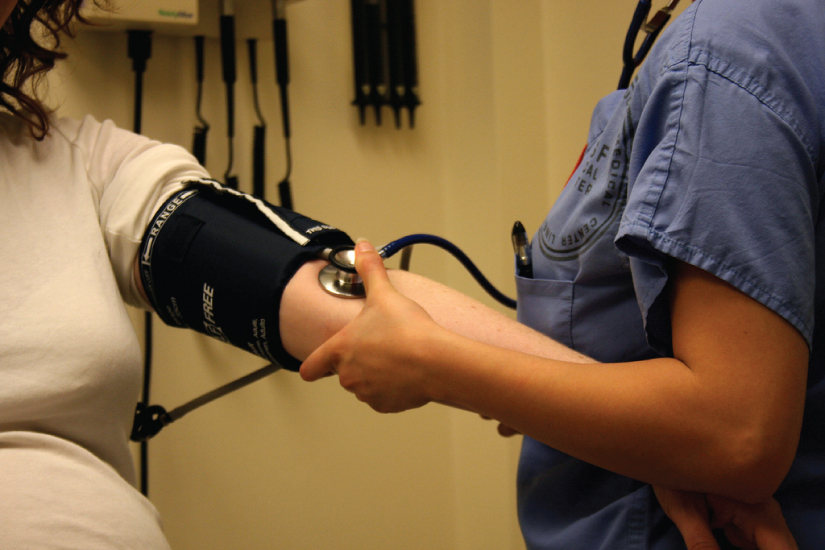
|

1.1 An introduction to the human body Read Online
1.2 The chemical level of organization Read Online

After studying this chapter, you will be able to:
Though you may approach a course in anatomy and physiology strictly as a requirement for your field of study, the knowledge you gain in this course will serve you well in many aspects of your life. An understanding of anatomy and physiology is not only fundamental to any career in the health professions, but it can also benefit your own health. Familiarity with the human body can help you make healthful choices and prompt you to take appropriate action when signs of illness arise. Your knowledge in this field will help you understand news about nutrition, medications, medical devices, and procedures and help you understand genetic or infectious diseases. At some point, everyone will have a problem with some aspect of his or her body and your knowledge can help you to be a better parent, spouse, partner, friend, colleague, or caregiver.
This chapter begins with an overview of anatomy and physiology and a preview of the body regions and functions. It then covers the characteristics of life and how the body works to maintain stable conditions. It introduces a set of standard terms for body structures and for planes and positions in the body that will serve as a foundation for more comprehensive information covered later in the text. It ends with examples of medical imaging used to see inside the living body.
Question: Most common biochemical abnormality observed in patients experiencing anti-TB drug induced liver injury
Choices:
ALT<<ALP
AST<<ALP
ALP<<ALT
ALT>>AST
Question: A 45 year-old male came to you for consult due to a 3-week history of cough and progressive weight loss. Work-up revealed tuberculosis. He mentioned that he was also diagnosed with cirrhosis after consulting with his gastroenterologist a week ago and that all tests were normal. In starting anti-TB meds, which will you avoid?
Choices:
None. I will start the usual 4-drug regimen
I will have to avoid at least 2 of the most hepatotoxic drugs
I will not start a regimen with any hepatotoxic drug as he re mainsat risk for drug-induced liver injury
I will avoid pyrazinamide as this is the most hepatotoxic among the anti-TB drugs
Question: WHO definition of hepatotoxicity with ALT >500U/L
Choices:
Grade 4 hepatotoxicity
Grade 3 hepatotoxicity
Grade 2 hepatotoxicity
Grade 1 hepatotoxicity
Question: Most notorious among anti-TB drugs to cause hypersensitivity reaction
Choices:
Isoniazid
Rifampicin
Streptomycin
Ethambutol
Question: Which among the first-line anti-TB medications have the least hepatotoxic potential?
Choices:
Isoniazid
Rifampicin
Ethambutol
Pyrazinamide
Question: Which among the following TB infections require treating for more than 6 months?
Choices:
mesenteric tuberculosis
TB meningitis
TB of the ileum
scrofula
Question: A predictor of mortality in anti-TB drug-induced liver injury
Choices:
malnutrition
ascites
HIV positive
heavy alcohol intake
Question: J.K., diagnosed with rheumatoid arthritis of 2 years was referred to your clinic. She constantly complains of joint pains in spite of good compliance to medications. Her attending rheumatologist is requesting for an infectious disease clearance to start infliximab. What would be your next step?
Choices:
Give the clearance; infliximab does not increase the risk for any infection
Grant the clearance once a baseline chest radiograph is devoid of infiltrates
Will do both IGRA test and chest radiograph; if both are positive, will initiate anti-TB treatment and advise against infliximab
Will do both IGRA test and chest radiograph; if only the IGRA test is positive, will advise to complete isoniazid prophylaxis before starting infliximab
Question: From initiation of anti-TB medications, what's the median time of onset to see signs and symptoms of hepatotoxicity?
Choices:
14 days from anti-TB initiation
28 days from anti-TB initiation
52 days from anti-TB initiation
More than 2 months from anti-TB initiation
Question: In the event of anti-TB drug-induced liver injury, and serial LFT now <2x ULN, what would be the best option to do for a patient?
Choices:
reintroduce the anti-TB all at the same time
reintroduce each drug sequentially, at full dose every 3 days
reintroduce each drug component sequentially and in increments
wait further until LFT has normalized before reintroducing anti-TB meds